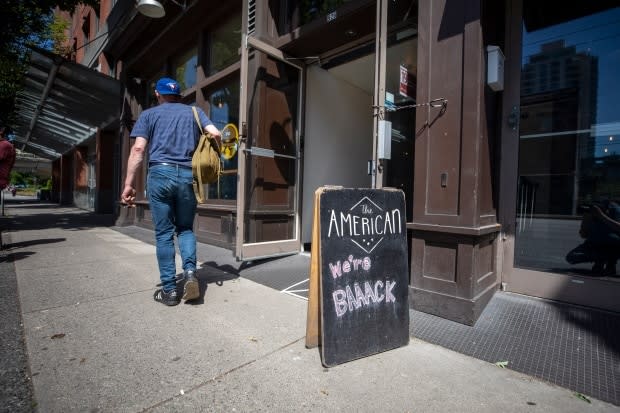B.C. jobless rate down to 13%, but recovery slower for women and youth
The jobless rate in British Columbia dropped slightly last month, reaching 13 per cent as the economy continued its rebound from the shutdown triggered by the pandemic.
Finance Minister Carole James, speaking at a Friday morning news conference, said the newly released data from B.C., which captures employment information from June 14 to 20, "paints a picture of cautious optimism, with a long road ahead."
"We continue to see positive signs as a result of B.C.'s restart plan," she said.
According to the data released by Statistics Canada, the unemployment rate slipped by 0.4 per cent in June after rising for three straight months.
The agency said the number of people employed in B.C. rose by 118,000 last month, after an increase of 43,000 in May. The province has continued to lift restrictions put in place to slow the spread of COVID-19 in recent weeks, allowing more businesses to reopen.
James said the gains in employment seen in May and June bring back around 40 per cent of the total job losses that B.C. had seen since February. The total net job losses as a result of the COVID-19 pandemic are around 235,000.
She said the greatest overall job losses were in the service sector, but that sector is also seeing the greatest gains, representing 50 per cent of job gains made in June.
Youth unemployment remains a concern
James said an area of major concern remains youth unemployment, which currently stands at 29.1 per cent. In B.C., 45,000 young people found jobs last month — however the youth unemployment rate is up as a result of more people attempting to join the workforce.
Nationally, the economy added 953,000 jobs last month, more than doubling the 290,000 added in May. Despite two months of growth, there are still 1.8 million fewer jobs in Canada than there were in February.
The unemployment rate dropped to 12.3 per cent, down from the record-breaking 13.7 reached in May.
Iglika Ivanova, an economist with the Canadian Centre for Policy Alternatives, said that B.C. is lagging slightly behind the rest of Canada when it comes to the number of actual hours worked.
"We have proportionably more people who are technically working, but are working zero hours or are not being paid," she said, explaining that the nature of COVID-19 shutdowns meant that many workers saw their hours reduced or cut entirely, without being laid off.

Ivanova said the unemployment rate also doesn't fully capture the interruption in the labour market. Unemployment rates represent the number of people actively applying for jobs, and Ivanova said many people are still hesitant to re-enter the job market, worrying about a lack of opportunities, the availability of child care or are waiting for their former employer to tell them they can return to work.
"I think it's really important that we're still a long way away from where we were in February," she said.
Men's employment bouncing back faster
The agency noted men are closer than women to pre-shutdown levels of employment, in every age category.
Jobs in sectors dominated by men, such as construction and manufacturing, have rebounded faster than those in service industries, tourism, and accommodation, where women tend to be employed in bigger proportion.
Ivanova said government recovery spending needs to be targeted in a way that will even out that divide.
"We need to take that into account in the recovery ... to balance the natural course of this recession, which is bringing men back to work to faster than women," she said, adding that decisions around child care and the return to school in the fall will be key.
A further statement on B.C.'s employment numbers is expected next week.

